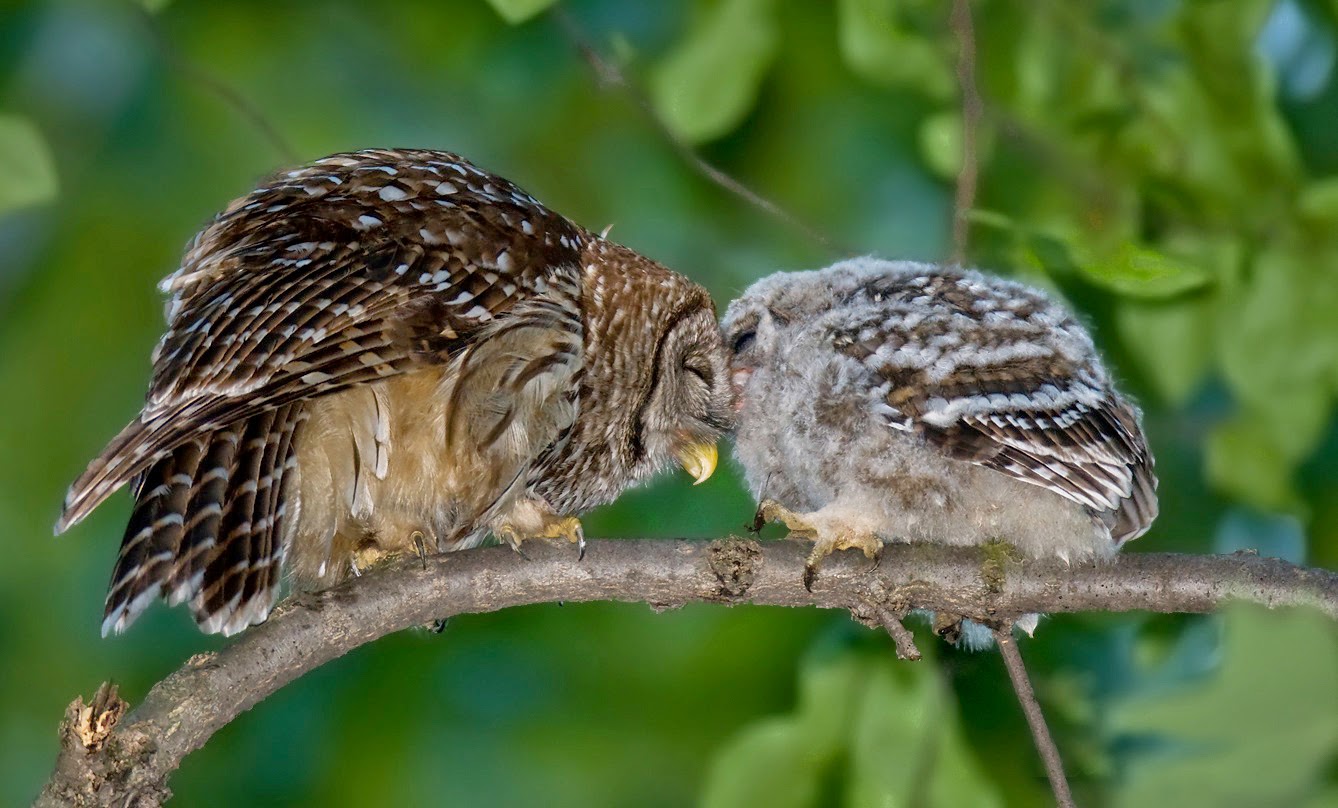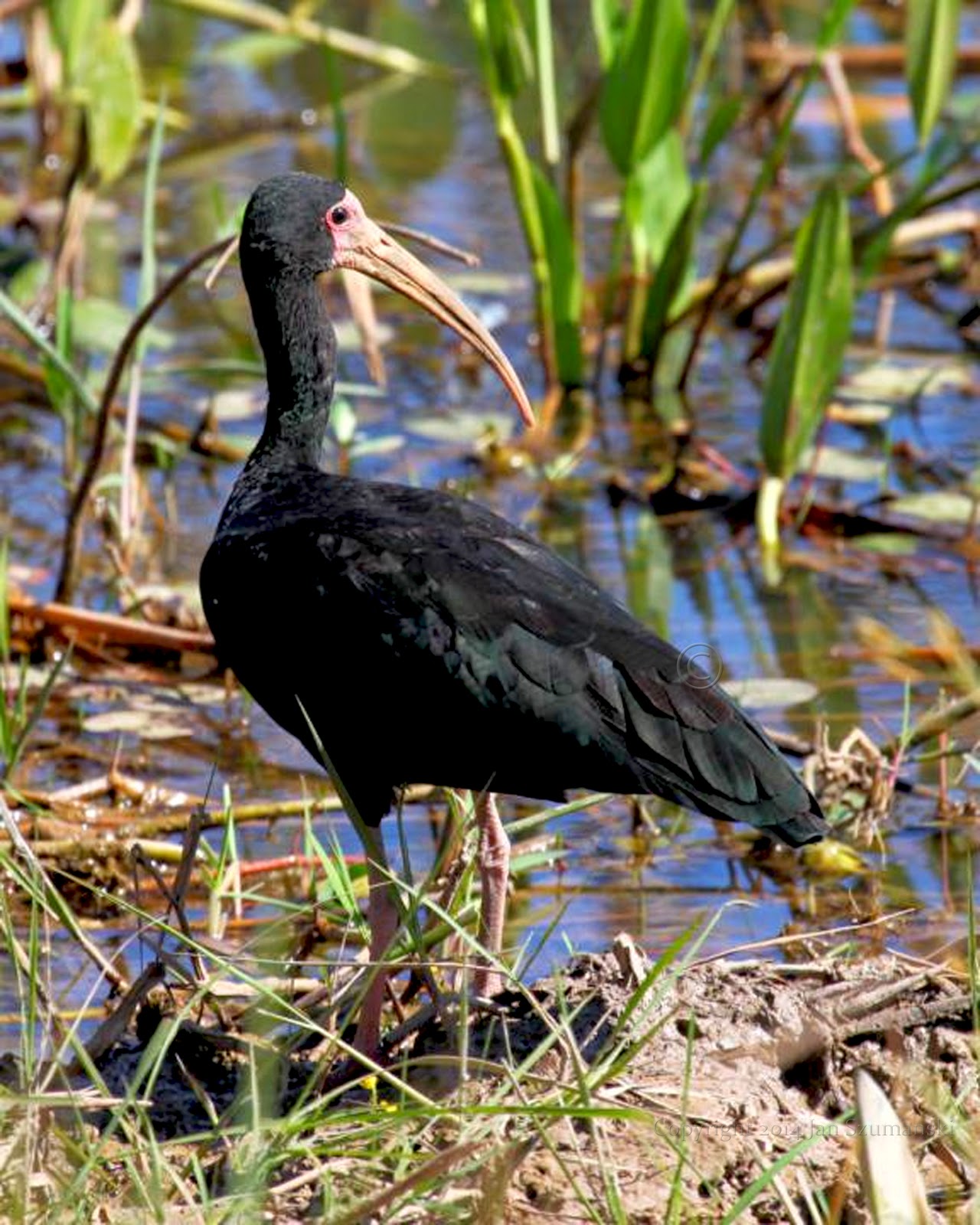Barred Owl - Puszczyk kreskowany
Cresskill, New Jersey, 2013
Description
Habitat
A nocturnal bird. Hides in dense foliage during the day, usually high up. May also roost on a branch close to a broad tree-trunk, or in a natural tree hole. May be very aggressive when defending a nest. Breeding habitats are dense woods across Canada, the eastern United States, and south to Mexico; in recent years it has spread to the northwestern United States, having gradually spread farther south in the west.
Voice
A loud barking hoo, hoo, hoo-hoo; hoo, hoo; hoo, hooo-aw! and a variety of other barking calls and screams.
Diet
Mostly small mammals. Eats many mice and other small rodents, also squirrels (including flying squirrels), rabbits, opossums, shrews, other small mammals. Also eats various birds, frogs, salamanders, snakes, lizards, some insects. May take aquatic creatures such as crayfish, crabs, fish.Behavior: Hunts by night or day, perhaps most at dawn and dusk. Seeks prey by watching from perch, also by flying low through forest; may hover before dropping to clutch prey in talons. Like many other owls, coughs up pellets of its prey.
Reproduction
Did you know?
The belly feathers of some Barred Owls are pink. This coloring may be the result of eating a lot of crayfish. A barred owl's right ear is higher than its left ear. Hearing from two different angles helps it pinpoint the location of prey.
Photos by others
Photos by others
Wikipedia, The Owl Pages



w.jpg)






+w.jpg)

w.jpg)


























